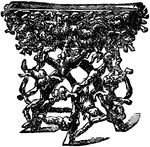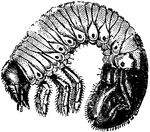
Terra Cotta Wardian Case
A wardian case made of terra cotta. They are used to help provide a moist atmosphere for plants that…

Stand of Rattan or Willow
"Stands made of willow or rattan are very ornamental, and much in use abroad."—Heinrich, 1887

Log Basket
"The imitation log baskets are made of the same material as the common flower pots, and painted in imitation…
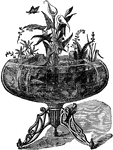
The Aquarium
"An aquarium well filled and stocked with plants, fish, etc., is one of the finest ornaments one can…

Snowy Tree Cricket
A tree cricket that lives in trees and shrubs. They feed on plant parts, other insects, and fungi.
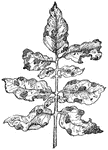
Early Blight of Potatoes
A fungal disease that affects potato plants. It causes small lesions on the plant, eventually killing…
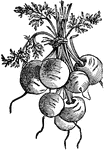
French Early Forcing
"The Early French Forcing is the leading variety for hot-bed culture. The plants have but a very small…

Bedding-Out Designs
Bedding-out is the temporary placing out of doors of greenhouse and other tender plants during the summer…

French and English Bell Glasses
Bell glasses are used to protect or accelerate the growth of a plant or plants. The French Cloche is…
The Bean Fly
The bean fly is found on many herbaceous plants. This fly is harmful to beans but is not easy to exterminate.

Larva, Frothy Secretion, and Perfect Insect of the Frog Hopper
Frog hopper belong to the same order as aphidoe, to the section which has the leathery upper wings.…

Portable Plant and Fruit Protector
A portable plant and fruit protector is used for growing smaller plants in the summer and storing those…

Double Grafting
Grafting is placing two cut surfaces of one or different plants under conditions which cause them to…
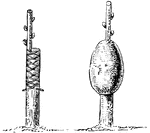
Mode of Tying and Claying Graft
Grafting is placing two cut surfaces of one or different plants under conditions which cause them to…

Mode of Supporting the Graft
Grafting is placing two cut surfaces of one or different plants under conditions which cause them to…
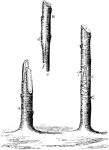
Whip or Tongue Grafting
Grafting is placing two cut surfaces of one or different plants under conditions which cause them to…

Cleft Grafting
Grafting is placing two cut surfaces of one or different plants under conditions which cause them to…
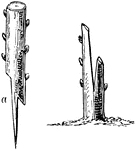
Cleft Grafting
Grafting is placing two cut surfaces of one or different plants under conditions which cause them to…

Saddle Grafting
Grafting is placing two cut surfaces of one or different plants under conditions which cause them to…
Wedge Grafting
Grafting is placing two cut surfaces of one or different plants under conditions which cause them to…
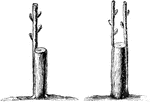
Crown or Rind Grafting
Grafting is placing two cut surfaces of one or different plants under conditions which cause them to…
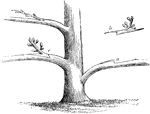
Side Grafting
Grafting is placing two cut surfaces of one or different plants under conditions which cause them to…

Grafting by Approach
Grafting is placing two cut surfaces of one or different plants under conditions which cause them to…

Root Grafting
Grafting is placing two cut surfaces of one or different plants under conditions which cause them to…
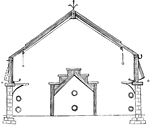
Section of Span Roof Plant House
A span roofed house is well adapted for greenhouse plants. The side stages are on a level with the wall…

Lean-to House
A lean to house is a type of greenhouse. This lean-to house has top ventilation provided by sliding…
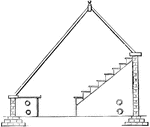
Hip Roofed Greenhouse
Hip roofed greenhouses admit light, but are not convenient for attending and arranging the plants.
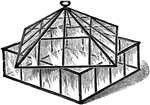
Hand Glass
Hand glasses are used as temporary coverings for plants that are too tender for being fully exposed.

Humble Bee
Humble bees sometimes damage beans and cultivated flowers. Some plants depend on the humble bee for…
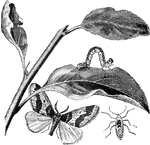
Male, Female, and Larva of the Mottled Umber Moth
Mottled umber moth is the common name of hybernia defoliaria. The moths emerge between October and March.…
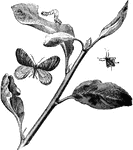
Male, Female, and Caterpillar of the Winter Moth
Female winter moths have wings so small that they have little to no use. The females must crawl up the…

House Cricket
House crickets are in the order Orthoptera. Crickets are destructive to plants in every stage after…

Female Cockroach
Cockroaches belong to the order Orthoptera. Cockroaches are harmful to plants in every stage after leaving…

Large Cabbage Butterfly Caterpillar
Caterpillar, larvae of the butterfly, are harmful to plants. These caterpillars sucker feet on the hinder…

Codlin Moth and Grub
Caterpillar, larvae of the moth and butterfly, are harmful to plants. These caterpillars sucker feet…

Larva and Chrysalis of the Onion Fly
The larva of the onion fly are maggots or footless grubs. Many live in the interior of roots, stems,…
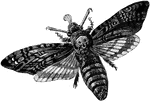
Death's Head Moth
Death's head moth feeds on potato, goji berry, and jasmine plants. These moths often have a straight…
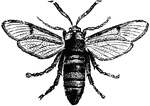
Clear Wing Moth
When clear wing moths are larvae they live in burrows, in the roots and stems of many plants, and often…

Bead Plant
Bead plant is the common name of netera depressa. Pictured is the plants in flower and fruit and the…
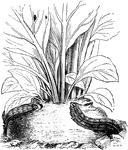
Caterpillar of Turnip Moth
Turnip moth is the common name of agrotis segetum. The caterpillars live on turnip roots, harming the…

Oak Galls
Galls are structures budded out from stems, leaves, or other pats of plants. Galls are made by insects…
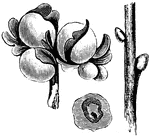
Oak Galls
Galls are structures budded out from stems, leaves, or other pats of plants. Galls are made by insects…

Smooth-Leaved Cayenne Pineapple
Smooth-leaved cayenne pineapple plants have purple flowers. The fruit is very large, cylindrical, and…
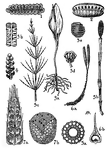
Marattiaceae and Ophioglossaceae
The order marattiaceae, and the maratiia family, consists of stately tropical ferns with thickened,…
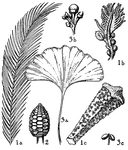
Cycadaceae and Ginkogoaceae
Cycadaceae is an order with more or less woody plants. The stems are thick, unbranched, columnar, or…
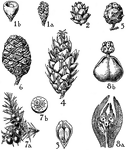
Taxaceae, Pinaceae, and Gnetaceae
Taxaceae order consists of the yew family. The Pinaceae order consists of the pine family. The Gnetaceae…

Typhaceae, Pandanaceae, and Naiadaceae Orders
The typhaceae order consists of perennial marsh herbs with creeping rootstocks. The pandanaceae order…

Alismaceae, Butomaceae, and Hydrocharitaceae Orders
Alismaceae is an order of herbaceous marsh plants with milky juice. Butomaceae is an order of aquatic…

Araceae, Lemnaceae, Bromeliaceae, and Commelinaceae Orders
Pictured from the araceae order are (1) arisaema, spathe and spadix, and (2) arum spadix with male and…
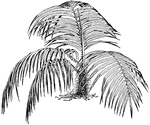
Acanthophoenix Crinita
The trunk of the acanthophoenix crinita tree is fifty to sixty feet tall. The leaves are seven to thirteen…
